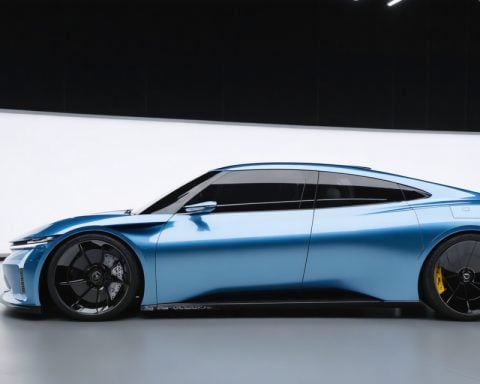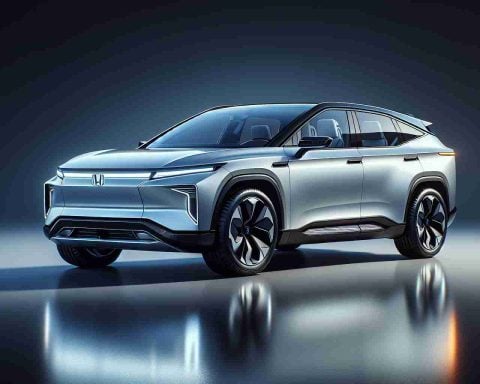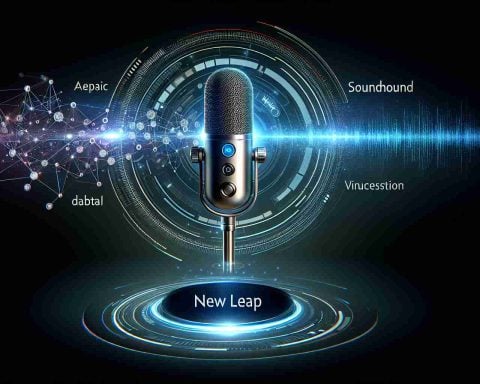- Honda Prologue leads the electric vehicle market with 3,744 units sold in January 2024.
- Ford’s Mustang Mach-E saw a 173% sales increase, showcasing interest in established brands.
- Hyundai Ioniq 5 recorded a 54% sales increase, taking third place in the market race.
- Total EV sales reached nearly 133,000 in December, demonstrating significant market momentum.
- Consumer interest is growing due to attractive tax credits and advancing technologies.
- The expanding variety of eco-friendly vehicles makes this a prime time for buyers to switch.
- Staying informed on advancements and policies will help make smart, sustainable choices.
The electric vehicle market is shifting gears at an incredible pace, with the Honda Prologue emerging as the front-runner in January 2024. Surpassing expectations, this dynamic newcomer sold an impressive 3,744 units, signaling a major shift as consumers look beyond long-standing favorites like Tesla. This changing landscape is echoed by Ford’s Mustang Mach-E, which catapulted 173% in sales, capturing the interest of those favoring established brands diving into electrics.
Not to be left behind, Hyundai’s Ioniq 5 clinched the third spot with a powerful 54% sales increase, while Kia’s EV6 and EV9 took the fifth and sixth places, respectively, illustrating an expanding array of EV choices for today’s buyers. With staggering sales of nearly 133,000 EVs in December alone, the momentum is undeniable.
Why are consumers flocking to EVs now? Several crucial factors are at play. Attractive tax credits and rapidly advancing technologies are making these vehicles more accessible and affordable. As eco-friendly options become more viable, drivers are seizing the opportunity to shift to sustainable rides.
The key takeaway for potential buyers in this electric uprising? The time to embrace electric vehicles is now. As options multiply, informed consumers staying updated on tech advancements and evolving policies will be best positioned to make smart, eco-conscious vehicle choices. The EV revolution is not only here—it’s speeding into the future, offering a sustainable journey for all. Ready to take the plunge into electrification and leave a cleaner legacy on the road?
The Electric Vehicle Surge: What’s Driving the Shift from Tesla
Why Are Electric Vehicles Gaining Popularity Now?
Electric vehicles (EVs) are experiencing a significant boost in popularity for several reasons:
1. Enhanced Financial Incentives: Governments worldwide are offering substantial tax credits and incentives to make EVs more affordable. For instance, in the United States, the federal tax credit for EVs can be up to $7,500, significantly lowering the overall purchase cost.
2. Technological Advancements: Rapid improvements in battery technology have extended the driving range of EVs, reducing range anxiety—a major concern for potential buyers. Many new models now offer ranges of over 300 miles on a single charge.
3. Increased Environmental Awareness: With growing concerns about climate change and pollution, more consumers are seeking eco-friendly transportation options. EVs offer a sustainable alternative, with zero tailpipe emissions contributing to cleaner air.
How Do These Trends Impact Traditional Automakers?
The rise in EV adoption is putting pressure on traditional automakers to innovate and compete. Companies like Ford and Honda are quickly adapting to capture market share in the expanding EV space.
– Ford has seen a dramatic increase in sales of its Mustang Mach-E, which jumped by 173%. The company is investing heavily in electric technologies and committed to offering more EV models in the coming years.
– Honda has stepped up with the Prologue, positioning itself as a new leader in the segment with impressive sales of 3,744 units in its launch month.
Automakers that traditionally dominated the internal combustion engine market are now investing in infrastructure, R&D, and partnerships to transition towards electrification.
What Are the Key Challenges Facing the EV Market?
Despite the growth, there are several challenges:
1. Infrastructure Development: While more consumers are interested in EVs, the charging infrastructure needs to expand rapidly to support this demand. Governments and private companies are working to increase the number of charging stations available, especially in urban areas.
2. Supply Chain and Production Limitations: The production of EVs is still catching up to demand, with supply chain issues affecting the availability of batteries and other critical components. This challenge is a barrier to scaling production quickly.
3. Market Competition: As more automakers enter the EV market, competition is intensifying. Companies must differentiate their offerings through unique features, affordability, and superior customer experiences.
Additional Resources
For more insights into the evolving electric vehicle landscape and sustainable innovations, consider the following resources:
– Honda to explore their latest electric models.
– Ford to learn about their electric vehicle initiatives.
– Hyundai to discover their Ioniq series and sustainability goals.
The shift to electric vehicles is an exciting journey towards a cleaner and more efficient future. Consumers and automakers alike must stay informed and adaptive to these fast-paced changes in the market.



















